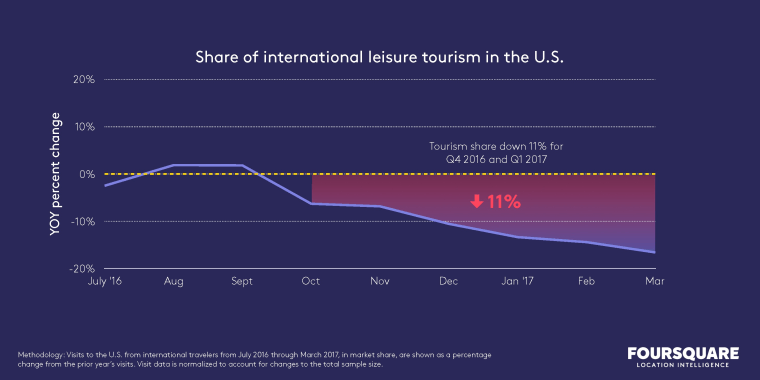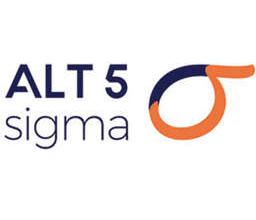US Tourism Decline: Businesses Brace for Financial Hit

In recent months, the decline in US tourism has raised significant concerns among businesses and policymakers alike. With a noted international travel slowdown, foreign tourists are increasingly opting to boycott visits to the U.S., leaving many industries that thrive on international visitors facing dire consequences. Cities such as New York and Los Angeles, which typically buzz with the energy of foreign travelers, are bracing for a substantial drop in tourism sales. This downturn is compounded by alarming travel advisories warning against potential risks associated with visiting the United States. As tourism revenues dwindle, the economic impact on US businesses that depend heavily on visitor foot traffic cannot be understated.
The downturn in America’s tourism sector has left numerous locales grappling with an unprecedented dip in international visitation. As visitors shy away from traveling to the United States, businesses that rely on this influx are feeling the crunch. The shrinking number of foreign travelers, largely attributed to ongoing geopolitical tensions and travel warnings, paints a troubling picture for the very industries designed to welcome them. Key destinations, which often celebrate bustling crowds from overseas, are now witnessing a marked decrease in foot traffic. The ramifications of this trend highlight a profound need for local economies to adapt to the evolving landscape of global travel.
The Impact of Foreign Tourist Boycott on US Businesses
As foreign tourists boycott the U.S. amid escalating geopolitical tensions, businesses that thrive on international visitors are feeling the pinch. Major cities like New York, Miami, and San Francisco, which generally enjoy a bustling influx of tourists, are now experiencing a marked decline in foot traffic. Restaurants, hotels, and local attractions that previously benefitted from the spending power of foreign visitors are bracing for a drastic drop in sales. In small towns like Anacortes, Washington, owners like Kaia Matheny report a slowdown in patronage from Canadian customers, which is particularly concerning given that Canada represents a significant portion of visitors to the U.S. This loss of revenue could lead to job cuts and economic strain on local businesses that rely heavily on seasonal tourism revenue.
The decline in foreign tourist spending is not just an isolated incident but rather a symptom of a broader issue affecting the U.S. economy. As international tourism sales decline, many establishments are left questioning their sustainability and future growth potential. This shift demands immediate adaptation by the businesses to explore new strategies to attract domestic tourists or pivot their services to weather the economic storm caused by the shortfall in international visitors.
Moreover, the financial repercussions extend beyond immediate sales figures. Businesses face the daunting prospect of increased operating costs during a downturn in customer volume. This phenomenon can threaten the existence of numerous small enterprises that have long relied on a steady influx of tourists. As tourism associated sales decline, the economic ripple effects may hinder local job markets and reduce overall consumer spending, creating a cycle of downturn. Consequently, the U.S. economy may be positioned for substantial losses if these trends in foreign tourist boycotts persist, affecting not only businesses but the national economy’s vitality as a whole.
US Tourism Decline: Underlying Factors and Future Predictions
The current U.S. tourism decline can be attributed to multiple intertwined factors, including increasing trade tensions and rising travel advisories from foreign governments. Trade policies that have taken a combative stance have given rise to intimidation and fear among potential international visitors, leading to an observable decrease in bookings. Notably, China and other nations have issued alerts about the risks associated with U.S. travel, citing heightened border security and overall deteriorating economic relations. This has resulted in a significant drop in travel interest from key markets, such as Canada and Europe, who historically contribute to the highest percentage of foreign tourist arrivals.
Furthermore, travel data indicates that as many as 30% fewer Canadians are interested in traveling to the U.S. compared to the previous year. Given that the statistics show a pronounced year-over-year decline in international visitors, projections suggest that the U.S. tourism sector could suffer an economic loss of approximately $10 billion this year alone, with potential declines exceeding $20 billion next year if current trends continue. This alarming forecast highlights the precarious position that U.S. tourism is in, begging the question of what the future holds for businesses reliant on international travel. The urgency for robust strategies targeting both domestic and international markets becomes paramount in resolving the fallout stemming from this tourism crisis.
How Travel Advisories Affect US Tourism
Travel advisories play a critical role in shaping the perceptions and decisions of potential tourists. When countries issue warnings regarding safety concerns, heightened scrutiny over border policies, or the potential for conflict, it can have an immediate impact on travel behavior. Recently, nations such as China and multiple European countries have disseminated advisories urging their citizens to consider alternatives to travel in the U.S. These warnings not only diminish the allure of visiting American landmarks but can foster a climate of fear that dampens travel enthusiasm entirely. For many would-be travelers, the risk associated with potential barriers during their visit outweighs the benefits of experiencing U.S. culture and attractions.
Moreover, the repercussions of these advisories extend beyond the individual traveler; they influence the broader economic landscape of the tourism industry. Businesses that cater to foreign travelers — from hotels and restaurants to local attractions — suffer as interest wanes based on government communication. If the trend continues, not only will ‘tourism sales decline,’ but the downturn may lead to lost jobs, decreased consumer spending, and negative impacts on local economies dependent on robust travel activity. This ongoing relationship between travel advisories and tourist behavior underscores the necessity of proactive measures from U.S. tourism leaders to mitigate the damage wrought by negative press and bolster traveler confidence.
Navigating the US Business Impact from Tourism Changes
As the landscape of international travel shifts, U.S. businesses are confronted with stark realities regarding their sustainability and profitability. The significant decrease in foreign visitors translates into reduced revenue for industries that heavily depend on international travel — particularly the hospitality and service sectors. Restaurants report reduced foot traffic, while hotels find themselves with lower than expected occupancy rates. Furthermore, smaller businesses, typically more vulnerable to fluctuations in tourism trends, face existential threats as the number of tourists dwindles. An acute awareness of this shift is crucial as businesses assess their strategies for recovery and adaptation.
The decision-making process for U.S. businesses in reaction to these changes must involve reevaluating their target markets and diversifying offerings. Many operators may look to attract more domestic tourists as an alternative or pivot toward local residents by hosting events, promotions, and community-focused initiatives. This pivot could potentially foster loyalty among locals and lessen reliance on international visitors alone. However, such measures require an aggressive and innovative approach as the clock ticks on an industry grappling with substantial financial repercussions from the ongoing declines in the tourism sector.
The Role of Social Media in Shaping Traveler Preferences
In today’s digital age, social media profoundly influences traveler preferences, providing an instant forum for sharing experiences, tips, and warnings regarding travel destinations. Posts, tweets, and videos showcasing both the positive and negative aspects of traveling to the U.S. can sway potential tourists significantly. As concerns about safety and respect for international visitors circulate online, social media becomes a powerful conduit for shaping public perception. A negative viral post can deter international travelers, especially when paired with travel advisories from their home governments. As such, businesses in the U.S. must be aware of their online presence and actively shape their narratives to mitigate the adverse effects of social media trends.
Furthermore, businesses can harness social media to engage with potential travelers directly and tackle misconceptions that arise from negative press. Engaging content that highlights the safety, enjoyment, and unique experiences awaiting visitors can help counteract hesitancy. The challenge remains for U.S. businesses to create compelling marketing strategies that resonate across demographic divides, appealing to both domestic and international audiences. This proactive communication, coupled with positive customer interaction on digital platforms, can serve as a springboard for revitalizing the travel experience to the U.S. and overcoming the effects of the current downturn.
Finding Opportunities Amid Declining Tourism
While the prospect of declining international tourism might seem daunting, there are still opportunities for U.S. businesses willing to pivot and innovate. In light of travel advisories and ongoing fears surrounding international travel, companies can seize upon the growing interest among domestic travelers seeking unique experiences within their own country. By highlighting local culture, culinary delights, and scenic landscapes, establishments can draw interest away from international locations and entice residents to explore their own backyards. This shift toward domestic tourism can cushion the impact of the loss in foreign visitors while fostering local economies.
Moreover, businesses can consider diversifying their offerings to adapt to changing consumer preferences. Creating packages that appeal to locals, such as experiences tied to seasonal events, workshops, or community engagement activities, can successfully attract a broader audience. Given the current state of flux in the tourism sector, companies should leverage partnerships with local tourism boards and engage in collaborative marketing efforts that shine a light on hidden attractions, thereby rediscovering their local areas. In doing so, they can navigate this unpredictable landscape and emerge with sustainability in mind regardless of the tourism climate.
Understanding the Economics Behind Tourism Decline
The economics of tourism reveal complex interdependencies that can be significantly impacted by external factors such as geopolitical events or economic downturns. The decline in foreign tourist arrivals directly corresponds to a reduction in spending on accommodations, dining, and leisure. As the U.S. anticipates losses reaching into the tens of billions, the broader economy may also feel the adverse effects across various sectors. When consumers spend less on travel-related services, the immediate implications ripple through ancillary industries relying on that spend, including manufacturing, retail, and construction. It’s essential to grasp these economic connections to fully understand why strategies to bolster tourism, particularly international visitation, can have extensive effects beyond the sector itself.
Furthermore, understanding fluctuations in tourism spending sheds light on the importance of marketing and engagement strategies at both the local and national levels to attract visitors. Businesses must prioritize attracting visitors by emphasizing economic value — showcasing their essential role within the broader economic framework. By implementing targeted promotional activities and addressing potential visitor fears through assurances of safety and inviting local experiences, U.S. tourism can rebound from this testing period, restoring its importance as one of the nation’s pivotal economic drivers.
The Future of International Travel to the U.S.
Projecting the future of international travel to the U.S. involves analyzing both current trends and potential shifts in tourism policies or geopolitical circumstances. As the financial implications of tourism decline hit hard, there is potential for the industry to adapt through strategic initiatives aimed at rebuilding relationships with international markets. This could include introducing flexible visa regulations and promoting the inherent safety and cultural richness of travel experiences in America. Government and industry leaders must come together to mitigate fears stemming from negative press and travel advisories, emphasizing a renewed commitment to fostering international tourism relations.
The evolution of international travel expectedly hinges on technological advancements and communication strategies. Innovations such as improved online booking systems, digital marketing efforts, and enhanced customer relationship management tools can facilitate a smoother travel experience for potential tourists. By combining these tools with a concerted effort to rebuild trust in international exchanges, the U.S. tourism sector can evolve and potentially emerge from the crisis stronger and better equipped to navigate future challenges, laying a foundation for a more resilient and vibrant tourism landscape.
Frequently Asked Questions
What factors are contributing to the US tourism decline?
The US tourism decline is largely driven by several factors including international travel slowdown due to trade tensions, immigration policies, and rising travel advisories from other countries. Concerns about safety and economic relations have resulted in foreign tourists re-evaluating their plans to visit the U.S.
How is the international travel slowdown affecting US businesses?
The international travel slowdown is negatively impacting US businesses, particularly those that rely on foreign tourists. Many establishments, especially in major tourist cities like New York and Miami, are witnessing significant declines in sales as fewer international visitors are arriving, leading to reduced foot traffic.
What role do travel advisories play in the US tourism decline?
Travel advisories issued by countries such as China and several European nations have contributed to the US tourism decline by cautioning their citizens against traveling to the U.S. These advisories highlight concerns over safety, security, and potential complications at the border, which deter foreign tourists from visiting.
What is the expected economic impact of the tourism sales decline in the US?
The tourism sales decline is expected to cost the U.S. economy approximately $10 billion in 2025 compared to 2024. Some estimates suggest that, if current trends persist, the economic loss could reach up to $21 billion, showcasing the significant impact of the decrease in international visitor spending.
Are foreign tourist boycotts contributing to the US tourism decline?
Yes, foreign tourists boycotting the U.S. due to various social and political issues, including trade and immigration policies, is a major contributor to the US tourism decline. This boycott has resulted in a substantial drop in travel demand from key markets, impacting local economies reliant on tourism.
How have Canadian visitors’ numbers changed due to US tourism decline?
Canadian visitors are notably affected by the US tourism decline, with reports showing a 14% drop in air arrivals and a staggering 32% decline in land arrivals in March 2025 compared to the previous year. This trend indicates that Canadian tourists are drastically reducing their travel to the U.S.
What measures are U.S. businesses taking in response to the tourism decline?
To cope with the tourism decline, many U.S. businesses are bracing for reduced foot traffic and are preparing to mitigate financial impacts. This includes adjusting staffing levels, revisiting marketing strategies, and exploring alternative revenue streams to accommodate the decrease in international visitors.
What can be done to reverse the trends of the US tourism decline?
To reverse the US tourism decline, efforts could include improving international relations, addressing safety concerns, and lowering travel barriers. Additionally, marketing campaigns that promote the U.S. as a safe and inviting destination could help attract foreign tourists back.
| Key Points | Details |
|---|---|
| Declining Foreign Visits | Foreign tourists are skipping trips to the U.S. due to tensions related to trade, immigration, and territory. |
| Economic Impact | Businesses relying on foreign visitors are experiencing financial losses, especially in cities like New York and Los Angeles. |
| Statistics | International visits dropped by 12% in March, with Canadian arrivals falling by 14% (air) and 32% (land). |
| Trade and Immigration Issues | Political tensions, such as tariffs and border security concerns, contribute to the decline in visitor numbers. |
| Financial Projections | Projected loss of $10 billion in 2025 if current trends continue, could rise to $21 billion, as estimated by the U.S. Travel Association. |
Summary
The US tourism decline is significantly impacting the economy as international visitors are opting not to travel to the United States due to increasing concerns over trade policies, immigration laws, and security measures. The mounting tensions have prompted a sharp decrease in tourism from key markets, notably Canadian, which has seen a reported drop in visits and corresponding spending. As a result, many businesses that rely on tourist traffic are bracing for fiscal challenges ahead, particularly with the peak travel season approaching. If these trends continue, the overall economic consequences could be devastating, leaving many in the industry questioning their future.




